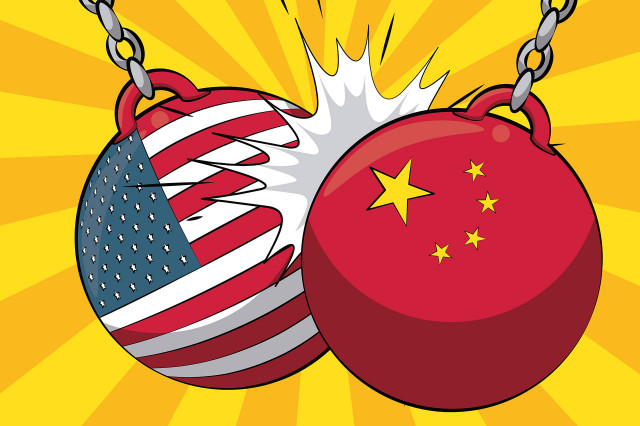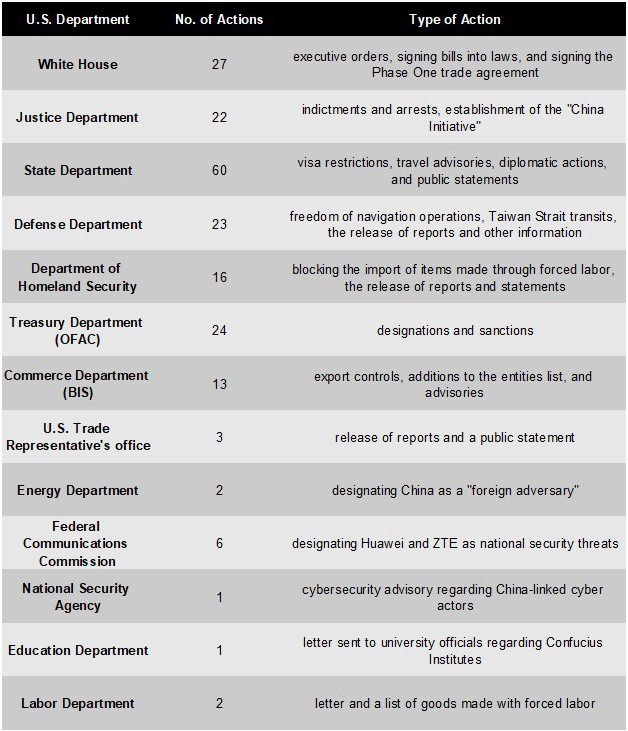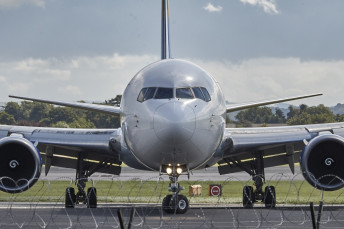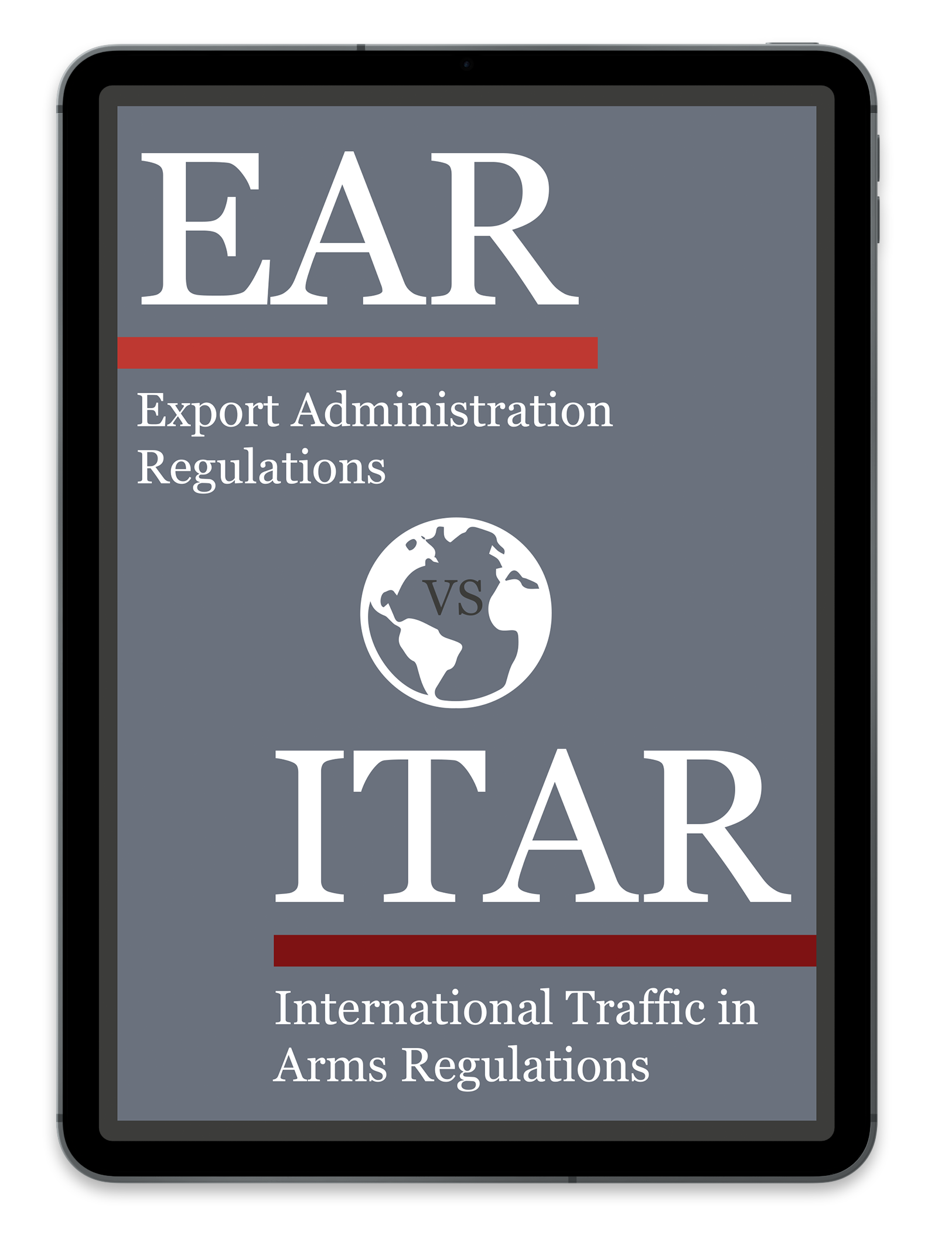
6 Things to Know About China Export Controls (Part 1 of 2)
The past couple of years have been tumultuous for U.S.-Sino relations, affecting export controls compliance needs and beyond. 2020 was a year that reshaped the political landscape between the U.S. and China. The Trump administration took no less than 210 public actions related to the People’s Republic of China (PRC). The actions involved at least ten departments supporting what the Trump administration called a “whole-of-government approach” to counter a wide range of national security threats posed by the policies and practices of the PRC government. In January 2021, the ties between the U.S. government’s concerns around the PRC’s motives, national security, and research security were reinforced through the National Security Presidential Memorandum NSPM-33.
Why does this matter?
The full impact of such a large number of actions in a short time frame has yet to be felt—leaving the academic community with the colossal task of digesting these new policies and not falling foul of the rules. Amid heightened geopolitical tensions between the United States and China, what essential items may universities and research institutions retain about this complex new landscape?
We are devoting two articles to dissecting 6 of the essential items under the new China-related export controls.
Read Part 1 here and watch out for Part 2 in a few weeks!
#1: Actions Taken by the U.S. Government: The Numbers
To appreciate the significance of the actions that U.S. departments took during the Trump-Era related to the PRC, let’s first look at what some of these actions entailed.

That’s a lot of actions to dissect and consider. To simplify, we will zoom in on the export controls considerations of relevance to the academic community.
#2: Foreign Universities Designated by the Commerce Department
On December 22, 2020, the Commerce Department’s Bureau of Industry and Security (“BIS”) published a final rule in the Federal Register, adding 77 entities and individuals to the Entity List. The U.S. Government determined these 77 entities to be acting contrary to the national security or foreign policy interests of the United States.
Among these entities were several prominent Chinese universities and research institutes such as the following:
- Beijing Institute of Technology
- Nanjing University of Science and Technology
- Nanjing University of Aeronautics and Astronautics
- Jiangsu Hengxiang Science and Education Equipment Co., Ltd.
- Tongfang Technology Ltd. (NucTech)
- Beijing University of Posts and Telecommunications, and
- Tianjin University.
This move by BIS to add Chinese universities and institutes to its Entity List has the primary purpose of protecting the transfer of ‘sensitive’ U.S. technologies and limiting the PRC’s military collaboration with U.S. universities, in line with U.S. national security and foreign policy interests under section 744.11(b) of the EAR.
What this means for exporters:
- Inclusion on the Entity list requires the exporting party to seek BIS permission to export “controlled U.S.-origin content.”
- BIS imposes a license requirement for the 77 entities added to the Entity List in the above final rule that applies to all items subject to the EAR.
- No license exceptions are available for exports, re-exports, or transfers (in-country) to the persons added to the Entity List in this rule.
- For some of the 77 entities, there may be a presumption of denial for license applications, subject to a license review policy on a case-by-case basis)
#3: 2022 Additions to the Commerce Department’s Unverified List
On February 08, 2022, BIS added 33 Chinese entities to its “Unverified List” (UVL) that U.S. persons and organizations must treat with caution. The UVL lists names of companies BIS could not verify as bona fide because an end-use check could not be completed satisfactorily due to reasons outside the U.S. Government’s control.
Parties listed on the UVL (Supplement No. 6 to Part 744) are ineligible to receive items subject to the Export Administration Regulations (EAR) through a license exception.
Of the 33 newly added entities, two are universities and research institutes subject to additional export control restrictions, as listed below.
- Hunan University State Key Lab of Chemo/Biosensing & Chemometrics
- Southern University of Science and Technology, Department of Mechanical and Energy Engineering
On October 09, 2020, 26 entities were added, and 40 were removed from the UVL. The listed entities include two universities with many overseas partnerships, the prestigious Sun Yat-sen University in southern Guangdong province and the large Sichuan University.
Therefore, the first step for exporters will be to determine whether a university or research institute is currently listed by screening entities. The International Trade Administration’s Consolidated Screening List (CSL) is a helpful tool that offers consolidation of multiple export screening lists of the Departments of Commerce, State, and the Treasury. It may aid in conducting electronic screens of potential parties to regulated transactions. If your university utilizes one of the commercial software packages available for restricted party screening, it is wise to check out the dynamic screening functionality.
#4: BIS’ New “Military End-User List”
On December 23, 2020, BIS issued a final rule amending the EAR by adding a new “Military End-User List” (“MEU List”) as Supplement No. 7 to Part 744 of the EAR. 102 entities were added to the MEU List, which included Chinese entities that the U.S. Government deemed to be “military end-users.”
Before the final rule, exporters, reexporters, or transferors were responsible for identifying the listed entities as “military end-users” themselves unless BIS otherwise notified them under the “is informed” process. This task was demanding on the public, and by creating the MEU List, BIS sought to ease the public’s compliance burden. With this new rule, BIS sought to inform the public that all exports of specified items to the entities on the MEU List represent an unacceptable “military end-use” risk and therefore require a license.
Therefore, a license is now required for the export, re-export, or transfer (in-country) to the PRC of items listed in Supplement No. 2 to Part 744 of the EAR. Licensing applies when the exporter, reexporter, or transferor knows that the item is destined for a “military end-use” (as defined in EAR Part 744.21(f)) or “military end-user” (as defined in EAR Part 744.21(g)).
BIS may still inform persons that a license is required to export, re-export, or transfer (in-country) any item due to an inherent risk of use in or diversion to a military end-user.
But ultimately, export compliance remains the obligation of the exporters, who must still conduct end-user due diligence for entities not on the MEU List. The MEU list is not a complete listing of “military end-users.” Parties not on the MEU List may still be deemed “military end-users” and require a license as per the MEU rule, as long as the criteria defined in EAR § 744.21(g) are met. For example, if the party is not listed on the MEU List but is listed in the U.S. Treasury’s Non-SDN Chinese Military-Industrial Complex Companies List (“NS-CMIC List”) or the U.S. Department of Defense’s “List of Communist Chinese Military Companies” (the “DoD List”), such listings would raise a Red Flag under the EAR. The exporter may require additional due diligence to determine whether a license is needed under the MEU rule. The entities identified in the final rule are only the first tranche of entities on the MEU List. It is expected that BIS may add other parties to the MEU List.
Navigating the Complexities Ahead
As an increasing number of Chinese universities and institutions are added to export control lists and the implementation of NSPM-33 is still undefined, U.S. universities are bracing for an increased workload driven by research security and export controls. While BIS’ move to add Chinese institutions to its Entity List aims to protect the transfer of U.S. ‘sensitive’ technologies, for some universities additional compliance needs will arise as a result. Some others could step back from collaborations with listed Chinese universities altogether for fear of inadvertently falling foul of the rules.
In the next post, we will look closer at the other OFAC and State Department requirements and, perhaps more importantly, the liability shift and consequences of noncompliance.
This posting is Part 1 of 2 articles about Export Control Compliance related to the U.S. and China. Part 1 of the series focuses on Commerce Department requirements, and Part 2 focuses on OFAC and State Department regulations.






Giving the current international situation more commodities will be affected by the Possible military use. Thank you